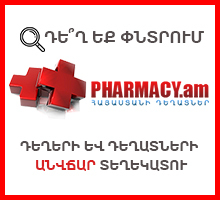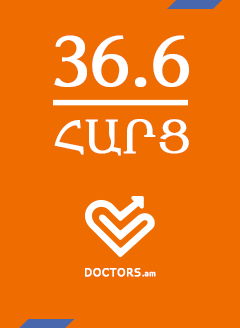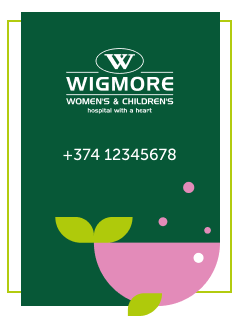Candidiasis (thrush) is an infection caused by a group of yeast. There are more than 20 species of Candida, the most common being Candida albicans. These fungi live on all surfaces of our bodies. Under certain conditions, they can become so numerous they cause infections, particularly in warm and moist areas. Examples of such infections are vaginal yeast infections, thrush, skin and diaper rash, and nailbed infections.
Candidal infections commonly occur in warm moist body areas, such as underarms. Usually the skin effectively blocks yeast, but any breakdown or cuts in the skin may allow this organism to penetrate.
Typical affected areas in babies include the mouth and diaper areas.
In adults, oral yeast infections become more common with increased age. Adults also can have yeast infections around dentures, under the breast and lower abdomen, nailbeds, and beneath other skin folds. Most of these candidal infections are superficial and clear up easily with treatment.
Rarely, the yeast infection may spread throughout the body. In systemic candidal disease, up to 75% of people may die. Even common mouth and vaginal yeast infections can cause critical illness and can be more resistant to normal treatment.
Yeast infections that return may be a sign of more serious diseases such as diabetes, leukemia, or AIDS.
Causes
In women, yeast infections are the second most common reason for vaginal burning, itching, and discharge. Yeasts are found in the vagina of most women and can overgrow if the environment in the vagina changes. Antibiotic and steroid use is the most common reason for yeast overgrowth. But pregnancy, menstruation, sperm, diabetes, and birth control pills also can contribute to getting a yeast infection. Yeast infections are more common after menopause.
In people who have a weakened immune system because of cancer treatments, steroids, or diseases such as AIDS, candidal infections can occur throughout the entire body and can be life-threatening. The blood, brain, eye, kidney, and heart are most frequently affected, but the candidal fungus also can grow in the lungs, liver, and spleen. Candida is the leading cause of esophagitis (inflammation in the throat) in people with AIDS.
Almost 15% of people with weakened immune systems develop a systemic illness caused by Candida. These infections enter into the bloodstream through breakdowns or cuts in the skin or mucous membranes. Candidal organisms may build up in an area because of frequent use of strong antibiotics, which kill the bacteria that normally keep it under control.
Use of devices implanted in the skin such as urinary catheters and IV ports also provide access for the yeast to enter the body. IV drug addicts using dirty needles may inject the yeast directly into their bloodstream or deep tissues.
Symptoms
Signs and symptoms of a candidal infection can vary depending on the location of the infection.
In women, signs and symptoms of a vaginal yeast infection are a white cheesy discharge that typically itches and irritates the vagina and surrounding outer tissues. On occasion there may be pain with sexual intercourse or burning with urination.
Oral candidiasis is called thrush. Thick, white lacy patches on top of a red base can form on the tongue, palate, or elsewhere inside the mouth. These patches sometimes look like milk curds but cannot be wiped away as easily as milk can. If the white plaques are wiped away with a blade or cotton-tipped applicator, the underlying tissue may bleed. This infection also may make the tongue look red without the white coating. Thrush can be painful and make it difficult to eat. Care should be given to make sure a person with thrush does not become dehydrated.
Candidal organisms naturally live on the skin, but breakdown of the outer layers of skin promote the yeast's overgrowth. This typically occurs when the environment is warm and moist such as in diaper areas and skin folds. Superficial candidal skin infections appear as a red flat rash with sharp scalloped edges. There are usually smaller patches of similar appearing rash nearby, known as "satellite lesions." These rashes may cause itching or pain.
In people with weakened immune systems, candidal infections can affect various internal organs and cause pain or dysfunction of the organ. Approximately 85% of people with AIDS contract a yeast infection called esophagitis in their upper gastrointestinal (GI) systems. This infection is similar to thrush but extends down the mouth and esophagus to the stomach. Candida esophagitis can cause painful ulcers throughout the GI system, making it too painful to swallow even liquids. If the infection spreads into the intestines, food may be poorly absorbed. People with this condition are in danger of becoming dehydrated.
If Candida gets into your bloodstream, you may become sick with or without fever. If the infection spreads to your brain, you may have acute changes in mental function or behavior.
Treatment
In clinical settings, candidiasis is commonly treated with antimycotics; the antifungal drugs commonly used to treat candidiasis are topical clotrimazole, topical nystatin, fluconazole, and topical ketoconazole.
For example, a one-time dose of fluconazole (150-mg tablet taken orally) has been reported as being 90% effective in treating a vaginal yeast infection. This dose is only effective for vaginal yeast infections, and other types of yeast infections may require different dosing. In severe infections, amphotericin B, caspofungin, or voriconazole may be used. Local treatment may include vaginal suppositories or medicated douches. Gentian violet can be used for thrush in breastfeeding babies, but when used in large quantities, it can cause mouth and throat ulcerations, and has been linked to mouth cancer in humans and to cancer in the digestive tract of other animals.
Chlorhexidine gluconate oral rinse is not recommended to treat candidiasis, but is effective as prophylaxis; chlorine dioxide rinse was found to have similar in vitro effectiveness against Candida.
C. albicans can develop resistance to antimycotic drugs. Recurring infections may be treatable with other antifungal drugs, but resistance to these alternative agents may also develop.












